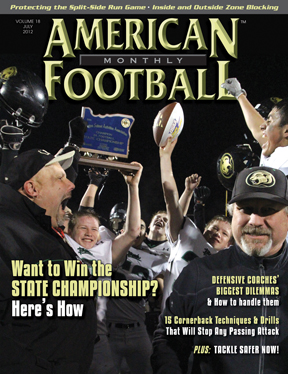Article CategoriesAFM Magazine
|
Strength Report – Seven Phasesby: Kurtis Von BargenOutside Linebackers Coach Trinity College © More from this issue Sam Houston State’s Strength and Conditioning Program TRAINING PHILOSOPHY Football is a game played on your feet from the ground up. This is why it is important to use free weight, ground based, multi-joint movements with a major emphasis on variations of the Olympic lifts (the power clean, power snatch and push jerk). We squat and front squat to below parallel, and do vari....The full article can only be seen by subscribers.
|
|
|||||||
| HOME |
MAGAZINE |
SUBSCRIBE | ONLINE COLUMNISTS | COACHING VIDEOS |
Copyright 2025, AmericanFootballMonthly.com
All Rights Reserved





